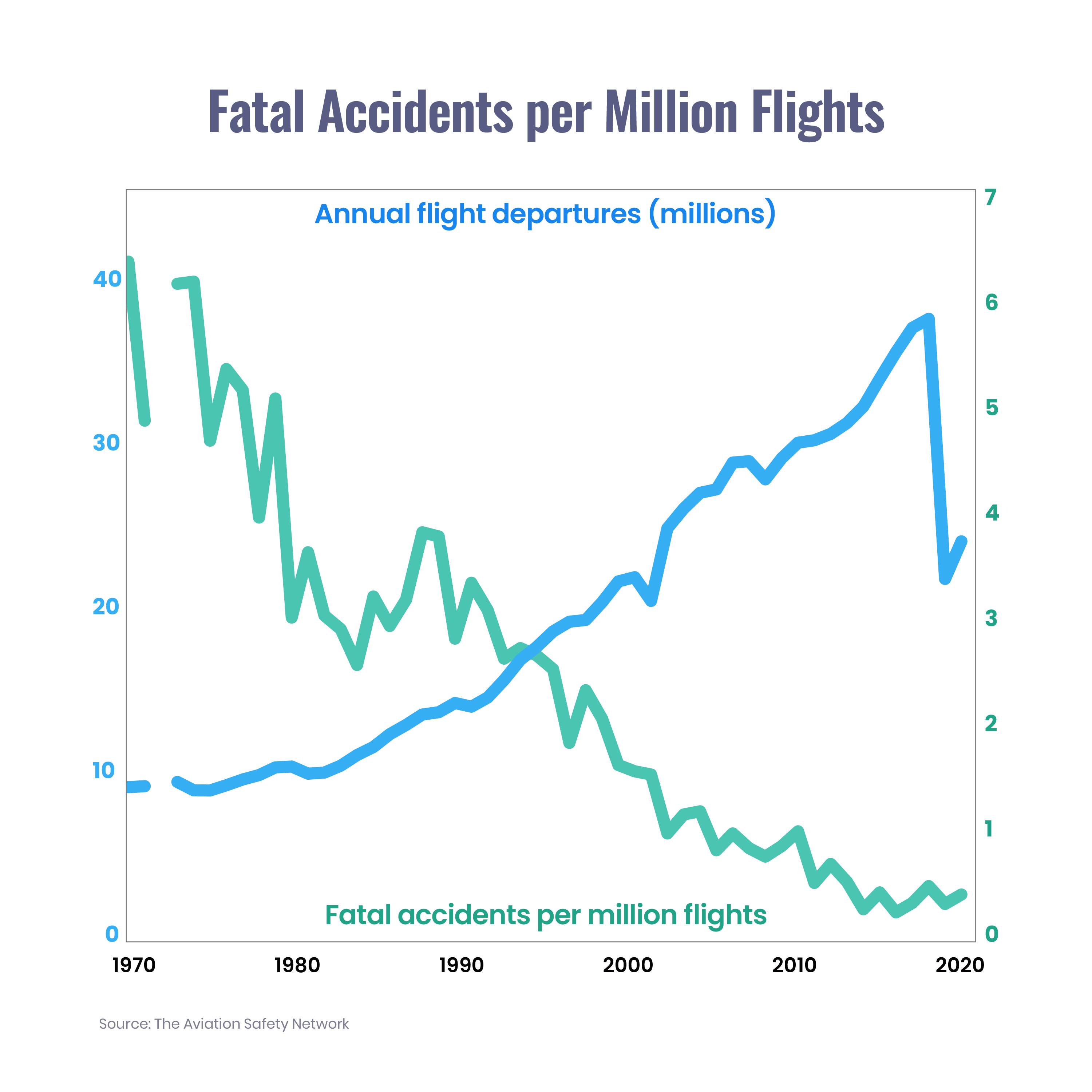4 min read
Risk Management in Healthcare: Lessons Learned from Aviation
Performance Health Partners
June 12, 2023

Risk management in healthcare is becoming a top priority, with leaders in the industry increasingly looking to the approaches used in aviation to improve their organizations' safety culture.
Whenever there are safety incidents, be it in aviation or the healthcare setting, one critical question is often considered: Could these events have been prevented? Harmful incidents frequently stem from undetected or unreported safety hazards, which illustrates a serious disconnect in the workplace and an urgent need for a profound transformation in risk management in healthcare.
What’s a culture of safety in healthcare?
The concept of a just culture, which is deeply embedded in the aviation industry, originated in the 1980s. It was born from the discovery that employees often had knowledge or suspicion about the conditions leading to accidents but were too fearful to speak up because of potential repercussions or fear of blame.
The aviation sector created procedures to combat this reluctance and promote an environment founded on trust, where essential safety information could be shared openly and, in every instance, learned from, and where accountability – in the absence of reprimand or humiliation – became the norm.
It signaled a turn toward a culture of safety where accountability took precedence over punishment, fostering an atmosphere focused on learning. It also prioritized proactive risk management over crisis management – or figuring out what to do about a problem after it happens. As a result, air travel today is safer than ever before.
Despite a doubling of the number of worldwide flight hours over the past twenty years, the number of fatalities on U.S. commercial carriers has fallen exponentially, from an average of 40 annual fatal accidents in 1960 to zero accidents every year since 2009. 
That result stands in surprising comparison to healthcare, where many organizations are just beginning—or have yet—to take a structured approach toward achieving a culture of safety, both when it comes to the adoption of proactive safety processes and when it comes to establishing an infrastructure that encourages reporting and learning from the information gathered.
In the United States alone, there are an estimated 200,000 deaths due to preventable adverse events every year, the equivalent of almost three fatal airline crashes per day.
As airline pilot Chesley Sullenberger noted:
“If such a level of fatalities was to happen in aviation, airlines would stop flying, airports would close, there would be congressional hearings, and there would be a presidential commission. No one would be allowed to fly until the problem had been solved.”
Risk management in healthcare: The importance of near miss reporting
One crucial area of focus is to increase the reporting of near misses, incidents that could have resulted in severe harm or death but were narrowly averted. These occur frequently in both aviation and healthcare and can serve as catalysts for investigating safety issues, stimulating corrective actions to prevent future catastrophic outcomes.
Near misses – or events that could have caused serious injury or death but were intercepted before they resulted in harm – are a key area of attention in building a culture of safety in healthcare. These regularly occur in both aviation and healthcare, and they can function as learning opportunities for identifying and analyzing safety risks and process gaps, and triggering remedial efforts to avert similar events from happening in the future.
However, this is only possible if both the near misses themselves and the system flaws that caused them are reported.
For example, in aviation, near misses might include: equipment malfunctions, unexpected adverse weather conditions, or loss of situational awareness by the flight crew. Tracking these types of safety events over time has allowed aviation risk management teams to identify areas of concern and put action plans into place for lasting improvement.
These near misses are also common in complex systems like hospitals. Take, for instance, a lab technician mislabels a patient's test sample, but a sharp-eyed physician notices the discrepancy before making a diagnosis. When effectively reported and analyzed, near misses like these present invaluable opportunities to strengthen safety protocols.
Healthcare organizations have been gradually adopting event and incident reporting processes inspired by the aviation industry to learn from near miss events. Yet, fully embracing practices like intentionally addressing system-wide gaps has proved challenging.
A fresh exploration of the aviation industry's approach to learning from near misses could furnish valuable insights for the healthcare sector.
3 tools to bolster risk management in healthcare
The aviation industry has witnessed substantial safety improvements, largely credited to the implementation of efficient safety protocols. Healthcare has been wisely borrowing some of these risk management strategies, including:
1. Safety checklists: Checklists for safety are an essential instrument in the aviation sector for enhancing safety and reducing hazards. Pilots methodically follow a checklist before every flight to make sure that everything is taken into account, from the flight path to weather patterns.
Today, automated checklists eliminate the risk of human error associated with manual checks, offer real-time updates, and streamline processes in healthcare. These checklists can efficiently track and ensure adherence to routine procedures such as hand hygiene, thus reducing the likelihood of infection.
Moreover, they can keep track of various patient-specific factors, facilitating personalized care, and enhancing patient safety. Ultimately, automated checklists can significantly improve healthcare risk management, mirroring the stringent standards seen in the aviation industry.
2. Threat and error management: The aviation industry places a great emphasis on managing risks using tools like threat and error management and crew resource management. Instead of attempting to completely avoid errors, the focus shifts towards training personnel to manage issues efficiently, thereby ensuring safety isn't jeopardized. By applying these ideas to risk management in healthcare, a culture emphasizing the value of managing, learning from, and growing through incidents is fostered.
3. Technology-enabled reporting: Advancements in technology allow aviation teams to report incidents and near misses rapidly and accurately. Similarly, in healthcare, technology-driven incident reporting and management solutions, fortified by actionable analytics, enable a more intelligent approach towards identifying, addressing, and most importantly, mitigating risks. These healthcare technology tools simplify data capture across multiple devices, enabling healthcare leaders to swiftly identify and address areas of concern.
By aligning with the aviation industry's safety-focused approach, healthcare organizations are making strides towards weaving safety into the very fabric of their operations, decreasing healthcare risks and inching closer to the ultimate goal of zero harm.
Ready to learn more? Connect with our team to learn how our Best in KLAS healthcare safety solutions can help your organization achieve safer care, improved outcomes, and decreased costs.


